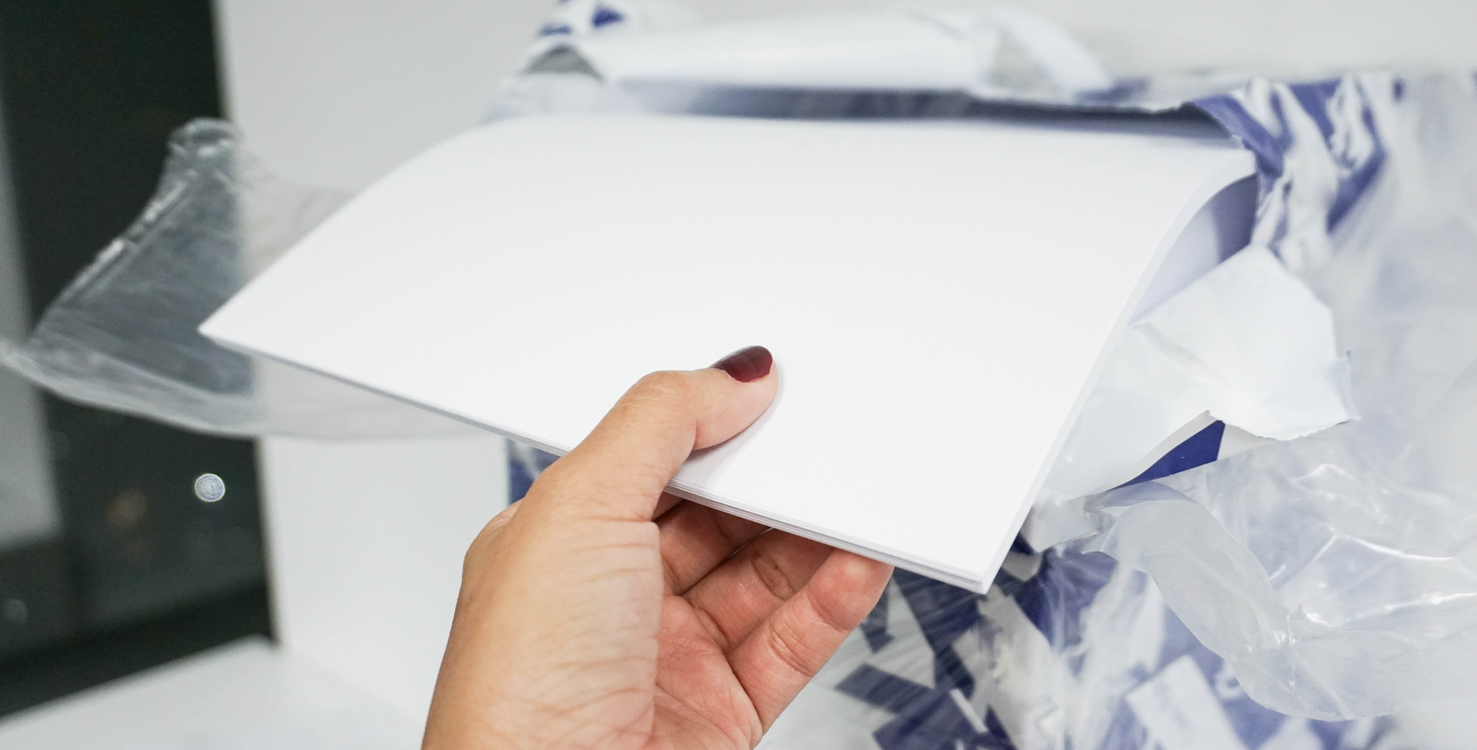Whether the paper that you use is for a convenience copier, a laser color printer, or a 40” 6-color press, there are precautions and recommendations for storage of the paper to ensure that it performs when it’s time to print.
Each grade of paper is manufactured to targeted specifications that vary slightly from grade to grade. Each grade is designed to be utilized on specific printing or converting equipment. Envelope grades are made to print and fold easily. Offset paper is made to be used with water lithography. Copy paper is manufactured to withstand a dry printing process that includes an element of heat that is produced by many toner devices. Since paper contains water it can and likely will respond to the elements that it is exposed to.
Atmospheric Conditions
The printing production area or the copy room should be in a controlled environment. Optimal conditions include a temperature between 60° and 76° with a humidity range of 40-60%. If possible, it’s best if your storage fits the same settings.
If it’s not possible to keep your paper in room where the temperature and humidity are managed, then bring the paper into the production area 24 hours before opening cartons or removing ream wrappers to begin production. This allows the paper time to acclimate to the controlled environmental conditions. It’s even more important to allow the acclimation time when the temperature outside is extremely cold or hot, dry or humid.
Other advice:
- Store paper away from direct sunlight and away from external doorways.
- Stack the cartons flat vs. on end.
- Stack the cartons on pallets or store ream/cartons on solid shelving so that the cartons do not have direct contact with the floor where they can absorb moisture. Wire shelving is not recommended for ream storage as it can make an indention in the paper.
- Copy paper should be sealed in the ream wrap until it’s time to place it in the production tray. The wrap has a vapor proof finish to protect the paper from air that is too dry or too humid.
- Before placing a ream of paper in the tray, gently fan the edges of the sheet to help prevent unwanted misfeeds.
- Keep the carton or skid labels until production is complete. If you are a commercial printer, it would be wise to keep the skid labels with the job ticket. These labels contain the mill’s run number, which is a like a birth certificate for the paper. It tells precise details about when the paper was manufactured, converted and on what equipment. When printers take this step and provide this information, it allows for expedient resolution. It also gives us the ability to contain the issue.
Shelf Life:
As corporate life shifts back to an office environment some customers may return to paper inventory that delivered before the pandemic and wonder if the product is still usable? Domtar recommends paper usage within one year of original shipment. However, the paper may be held for longer periods if the guidelines above are adhered to. If your inventory wasn’t exposed to harsh conditions and remained sealed in reams, cartons, pallet wrap, chances are that it will perform just fine.
Why it Matters
Domtar invests regularly in the maintenance of our machines and converting equipment to produce quality product that you can rely on. Our paper is packaged in materials that preserve the condition until you are ready to print on it. Share this information with those in your organization that handle and manage the inventory. If you practice these simple tips then you and your organization will be doing your best to ensure success.



Discussion